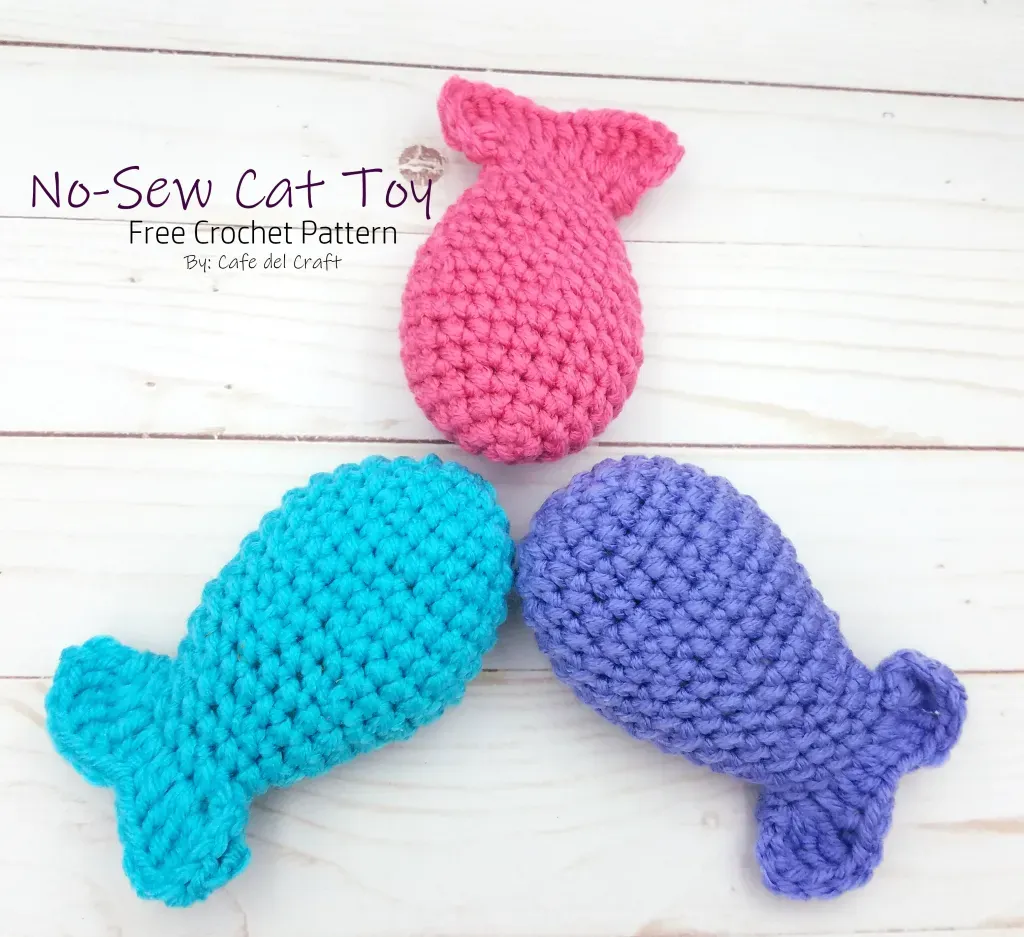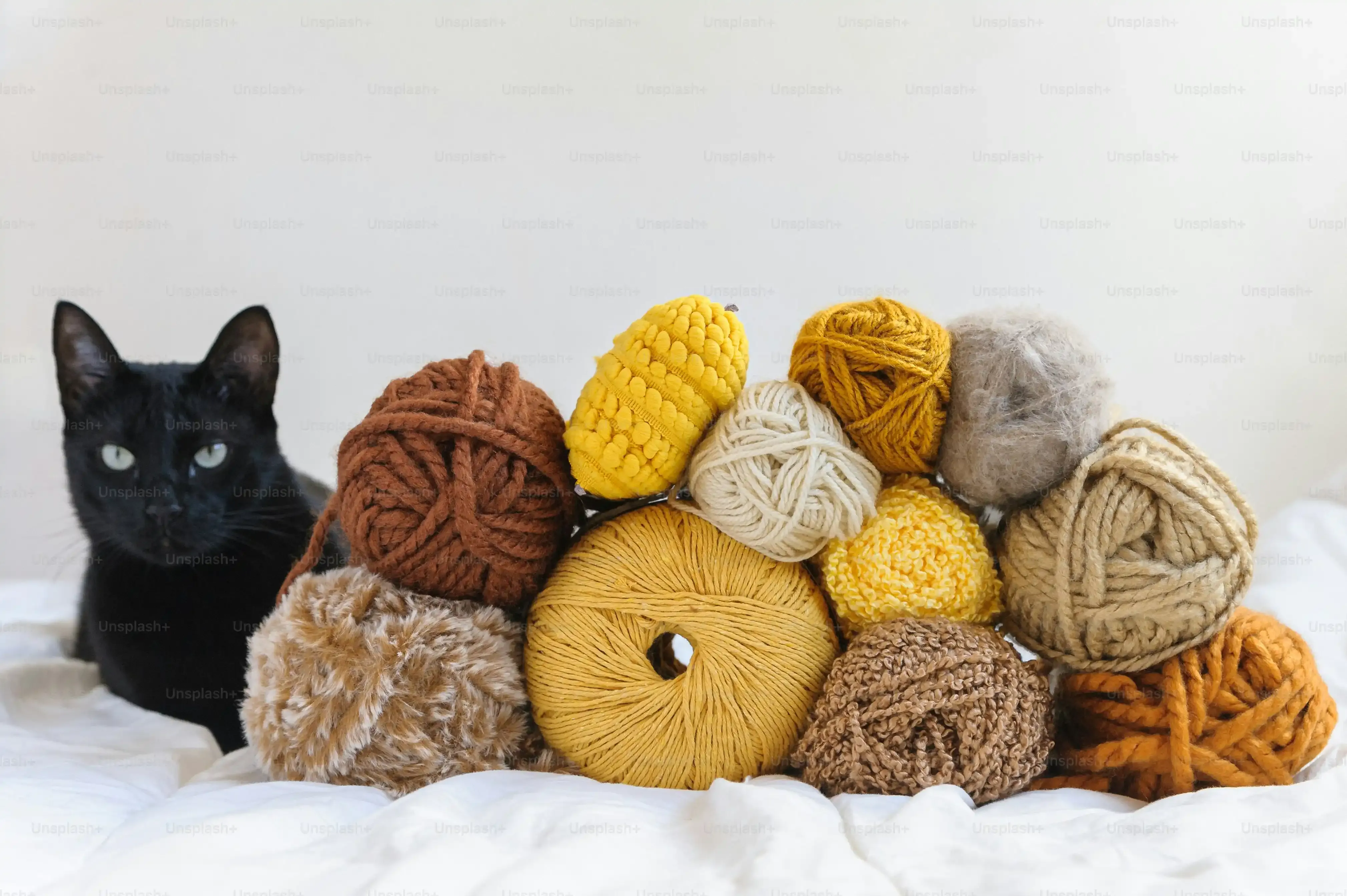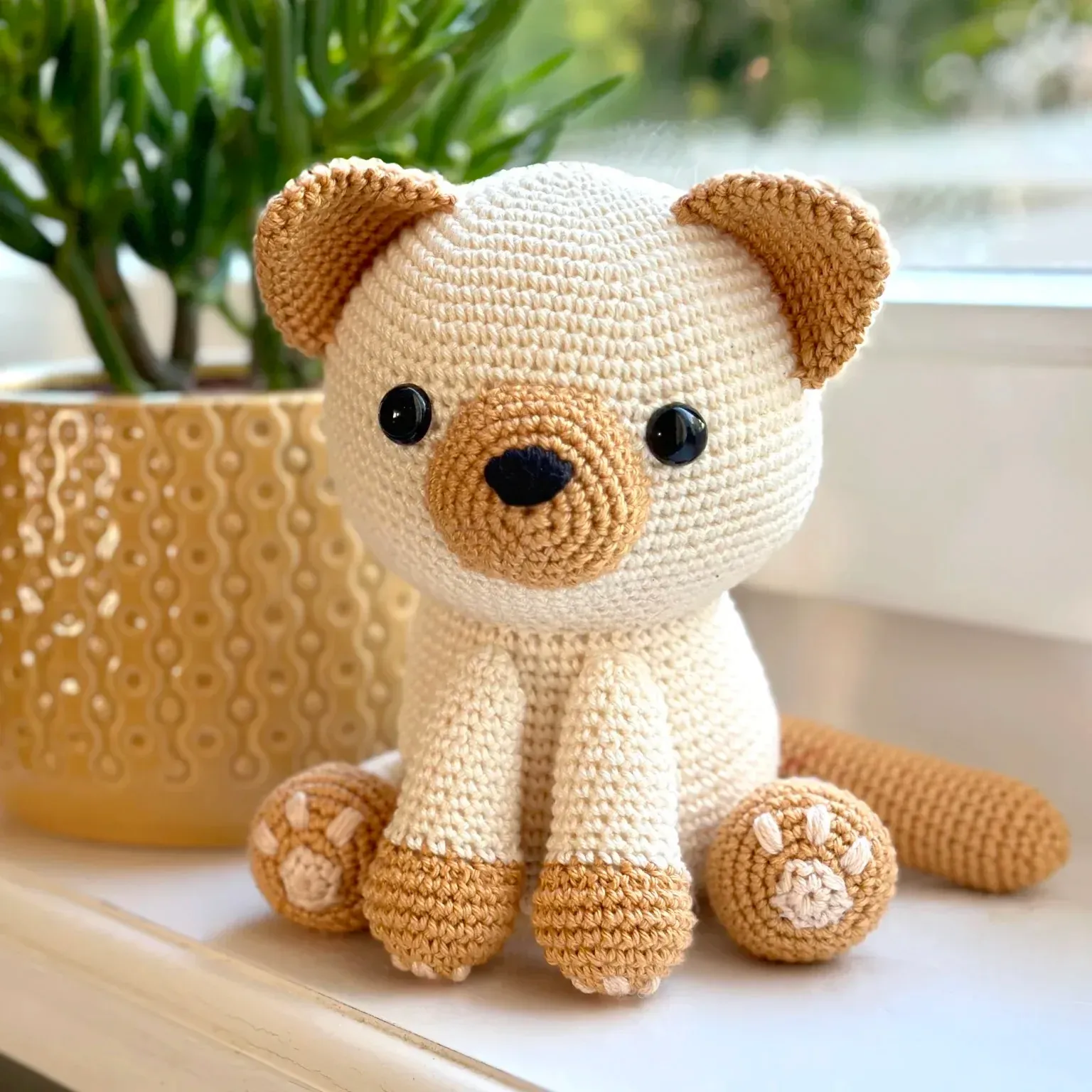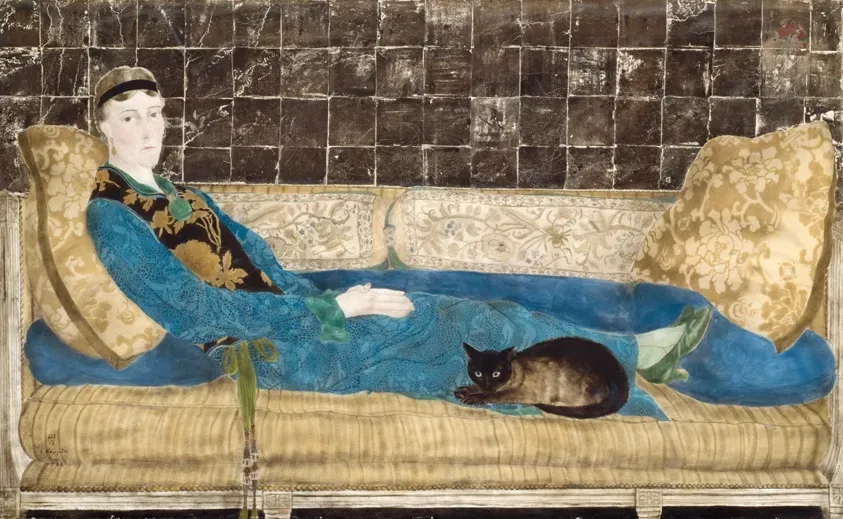Table of Contents
Let's be honest, cats can be expensive. They demand the finest kibble, the most luxurious napping spots, and apparently, an endless supply of tiny objects to bat under the sofa. Buying cat toys feels like a never-ending quest, often resulting in a crumpled piece of plastic or a sad, deflated mouse within hours. What if you could whip up some feline entertainment yourself, for next to nothing? That's wherefree cat toy patterns crochetcomes in. Forget the store-bought stuff that lasts five minutes. Grab your hook and some yarn; we're diving into the world of DIY cat distractions.
Why Bother with Free Cat Toy Patterns Crochet?

Why Bother with Free Cat Toy Patterns Crochet?
So, you're scrolling online, see "free cat toy patterns crochet," and maybe you think, "Really? Crochet? For a cat that will probably just ignore it or chew it to pieces?" Fair point. But let's talk about why this isn't just a crafty way to pass the time; it's actually a smart move for both your wallet and your feline overlord. Store-bought toys disappear faster than a treat in my cat's presence. They break, they get lost, or frankly, your cat just decides it's boring after five minutes. Usingfree cat toy patterns crochetmeans you can churn out replacements easily and cheaply. Plus, you control what goes into them, avoiding questionable plastics or fillers. It's a way to provide novel, engaging toys without the constant trip to the pet store or the guilt of throwing away another quickly destroyed purchase.
Think about it: you're giving your cat something unique, made with your own two hands. My cat, Mittens, has a particular fascination with a little crocheted mouse I made. He ignores the fancy electronic thing that cost me twenty bucks. Go figure. It’s not just about saving money; it’s about creating something that might actually capture their attention, something that feels a bit more personal. And if they destroy it? Well, it was practically free anyway, and you can just make another.
Here are a few solid reasons to dive into free cat toy patterns crochet:
- Saves serious cash compared to buying toys weekly.
- Allows you to customize size, shape, and color to your cat's preference (or your aesthetic).
- Lets you choose safe materials, avoiding potential toxins in some commercial toys.
- Provides a creative outlet for you.
- Offers a constant supply of "new" toys to keep your cat stimulated.
Getting Started: What You Need for Free Cat Toy Patterns Crochet

Getting Started: What You Need for Free Cat Toy Patterns Crochet
Gathering Your Arsenal (It's Not Much, Promise)
so you're ready to stop buying those flimsy things and actually make something durable your cat will enjoy. The good news? You don't need a dedicated craft room or a second mortgage for supplies. Getting started withfree cat toy patterns crochetrequires surprisingly little. You need a crochet hook – check the pattern for the recommended size, but a common one like a G (4.0mm) or H (5.0mm) is a good start for many patterns. You'll also need yarn. We'll talk about yarn choice in a sec, because that's crucial for safety. A small pair of scissors is essential for snipping yarn tails. A tapestry needle is handy for weaving in ends securely, which is non-negotiable when making cat toys. That's pretty much it for the absolute basics. See? Not intimidating at all.
Picking Yarn That Won't Cause Trouble
Choosing the right yarn is arguably the most important step when using free cat toy patterns crochet. Your cat is going to chew, lick, and potentially ingest bits of this toy. Acrylic yarn is widely available and comes in tons of colors, but some cats can ingest the fibers, which isn't great. Natural fibers like cotton or wool are often preferred. Cotton is durable and washable. Wool is appealing to cats because of the lanolin scent, but make sure it's not treated with harsh chemicals and that you can wash it in case of... enthusiastic play. Avoid anything with glitter, sequins, or thin threads that can easily break off and be swallowed. Seriously, think "chew-proof and digestible" before you even look at the color.
When in doubt, stick to these:
- 100% Cotton (durable, washable)
- 100% Wool (appealing, but ensure it's untreated)
- Acrylic (use with caution, monitor for shredding)
Definitely steer clear of novelty yarns with fuzzy textures or metallic threads that unravel easily.
Stuffing, Bells, and Safety First!
Beyond the yarn and hook, you'll need something to stuff your creations. Polyester fiberfill, the stuff you find in most pillows, works fine. Just make sure you stuff it firmly so it holds its shape but not so much that it's a rock. Some patterns call for bells or crinkle material. If you use bells, make absolutely certain they are securely enclosed within the toy. A bell falling out is a choking hazard waiting to happen. Same goes for any added elements like felt eyes or tails – sew them on *tightly*. Catnip is optional, but let's face it, it makes most toys instantly more interesting. Just tuck a little pouch of dried catnip inside the stuffing before closing it up. The cardinal rule for any of thesefree cat toy patterns crochetprojects? Weave in those yarn ends like your life depends on it. A loose tail is an invitation for chewing and unraveling.
As my vet once drily remarked, "If a cat can ingest it, they will try." Keep that in mind as you stitch.
Simple & Sweet: Easy Free Cat Toy Patterns Crochet Ideas

Simple & Sweet: Easy Free Cat Toy Patterns Crochet Ideas
Start with the Basics: Balls and Simple Shapes
Alright, you've got your hook, your cat-safe yarn, and maybe a suspicious amount of fiberfill. Where do you even begin withfree cat toy patterns crochet? Don't overthink it. The simplest patterns are often the most effective. A basic crocheted ball is usually just a matter of crocheting in a spiral, increasing stitches until you reach the desired size, stuffing it, and then decreasing to close. It sounds almost too easy, right? Cats aren't exactly discerning art critics. They like things that move unpredictably when batted. A simple ball fits the bill perfectly.
You can make these in various sizes. A small tight ball for chasing under furniture, a slightly larger one they can bunny-kick. You can even crochet a simple square or rectangle and fold and stitch it into a little pouch. Stuff it lightly. Instant crinkle toy if you add some crumpled paper inside the fiberfill (make sure it's paper they can't easily ingest). The point is, you don't need a degree in advanced amigurumi to make something your cat will enjoy batting around at 3 AM.
Adding a Little Flair: Mice and Fish
maybe a plain ball feels a bit... basic. Ready to try something slightly more recognizable? Manyfree cat toy patterns crochetoffer variations on classic cat prey: mice and fish. These usually involve a similar principle to the ball (crocheting a basic shape and stuffing it), but they add simple elements like ears, tails, or fins. Often, the ears are just a couple of extra stitches worked back and forth, and the tail is a simple chain stitch or a short i-cord. A fish shape might involve a bit more shaping with increases and decreases, but it's still fundamentally straightforward.
These patterns often use minimal yarn and work up quickly. You can make a whole school of fish or a nest of mice in an evening. It's satisfying to create something that actually looks like a recognizable object, even if your cat's primary goal is to disembowel it. Remember to securely attach any extra bits like eyes or tails. A tapestry needle and weaving those ends in multiple directions is your best friend here.
What makes a simple crocheted toy a hit?
- The right size for batting and carrying.
- A texture that feels interesting to them (crochet stitches are great for this).
- Something to make noise (securely enclosed bell or crinkle).
- Optional: A hint of catnip magic.
Speedy Projects: Rings and Rings with Tails
Need a super-fast project? Consider crocheted rings or rings with simple tails. A ring is just a circle crocheted flat or in the round, maybe stiffened slightly with tighter stitches or by crocheting over a plastic ring (ensure the plastic ring is large enough not to be swallowed if exposed). Cats love batting rings and hooking them with their claws. Add a simple crocheted tail to one side, and you've got a comet-like toy they can chase. These use minimal yarn and work up in minutes, perfect for using up scraps.
Another quick win is a simple tube shape, closed at both ends. Stuff it with fiberfill and maybe some crinkle material. It's essentially a mini bolster pillow for your cat to kick. The beauty offree cat toy patterns crochetis the sheer variety of simple shapes you can create with basic techniques. Don't feel pressured to tackle something complex right away. Start simple, build confidence, and watch your cat enjoy your handmade efforts.
Level Up: More Involved Free Cat Toy Patterns Crochet

Level Up: More Involved Free Cat Toy Patterns Crochet
Trying Amigurumi Critters
so you've mastered the basic ball and perhaps a slightly lopsided fish. Ready to get a little more ambitious with yourfree cat toy patterns crochetprojects? Amigurumi, the Japanese art of crocheting small stuffed creatures, offers a whole world of possibilities. Think tiny octopuses with dangly legs, chunky birds, or even miniature versions of your cat's favorite actual prey (if you're feeling particularly morbid). These patterns usually involve crocheting in the round, working single crochet stitches, and carefully increasing and decreasing to shape heads, bodies, and limbs.
It's a step up from a simple sphere, requiring a bit more attention to stitch counts and joining pieces. But the payoff is a recognizable, often adorable, little creature your cat can bond with (or, more likely, try to rip the stuffing out of). Don't be intimidated by the term "amigurumi." Many patterns designed for cat toys are simplified versions, perfect for practicing these techniques without committing to a giant, complex project.
Patterns with More Parts
Beyond simple shapes, somefree cat toy patterns crochetinvolve assembling multiple pieces. This could be a mouse with separate ears and a tail sewn on, a fish with distinct fins, or even a crinkle toy where you crochet a fabric casing to enclose crinkle material (like clean plastic bags or specialized crinkle paper). Working with multiple pieces teaches you valuable joining and finishing techniques – skills that are crucial for making durable toys.
Imagine a pattern for a little bird. You might crochet the body, then add separate wings and a tail. Each piece is simple on its own, but putting them together requires careful stitching to ensure they won't detach during a vigorous play session. This is where that tapestry needle really earns its keep.
What kind of multi-part toys can you find?
- Mice with added ears and tails.
- Fish with separate fins.
- Birds with distinct wings.
- Toys with attached legs or tentacles (like an octopus).
- Crinkle pouches with separate closures.
Adding Interactive Elements
Feeling confident? Somefree cat toy patterns crochetincorporate elements designed for more interactive play. This could be a toy on a string (make sure the string is short and supervised play only!), a toy that attaches to a door handle for batting, or even patterns designed to hold a small ball inside for rattling. These projects often combine different crochet techniques and require a bit more structural integrity.
For instance, a pattern for a door hanger toy might involve crocheting a sturdy loop at the top and a weighted toy at the bottom. You need to pay close attention to the pattern's instructions for reinforcement and secure closures. Remember, the goal is fun, but safety is paramount. If a pattern seems too complex or has elements that look like potential hazards (long strings, small pieces that could break off), it's okay to skip it or modify it to be safer. Your cat's enthusiasm shouldn't come at the risk of a vet visit.
Keeping it Safe: Tips for Your Crocheted Cat Toys

Keeping it Safe: Tips for Your Crocheted Cat Toys
Safety First: Making Your Handmade Toys Cat-Proof
Alright, you're getting the hang of thesefree cat toy patterns crochet, whipping up adorable little critters and shapes. That's fantastic! But before you unleash your creations on your unsuspecting feline, we need to talk safety. This isn't optional; it's crucial. Cats chew, they swallow, and they have surprisingly sharp claws and teeth. The number one rule? Secure those ends. Seriously, weave them in multiple directions using a tapestry needle and trim them super close. A loose yarn tail is a direct ticket to your cat's stomach, and that's a vet visit nobody wants. Use only cat-safe materials – natural fibers like cotton or wool are generally best, avoiding anything synthetic that sheds fibers easily or is treated with chemicals. If you add bells or other inserts, they *must* be completely enclosed and impossible for your cat to reach. Regularly inspect your crocheted toys for wear and tear, loose threads, or holes where stuffing could escape. Toss or repair anything that looks like it's falling apart. A few minutes of checking can save a lot of worry later.
Hook, Line, and Happy Cat
So there you have it. Armed with a hook, some yarn scraps, and a fewfree cat toy patterns crochet, you're ready to tackle the relentless demand for new cat toys. We've covered the essentials, dipped into some simple and more complex ideas, and hopefully, drilled home the importance of safety. Making toys yourself isn't just about saving a few bucks; it's about knowing exactly what your cat is batting around and potentially ingesting. Plus, there's a certain satisfaction in watching your cat absolutely lose it over something you made with your own two hands. Give it a try. Your sofa might thank you when fewer store-bought mice end up underneath it.